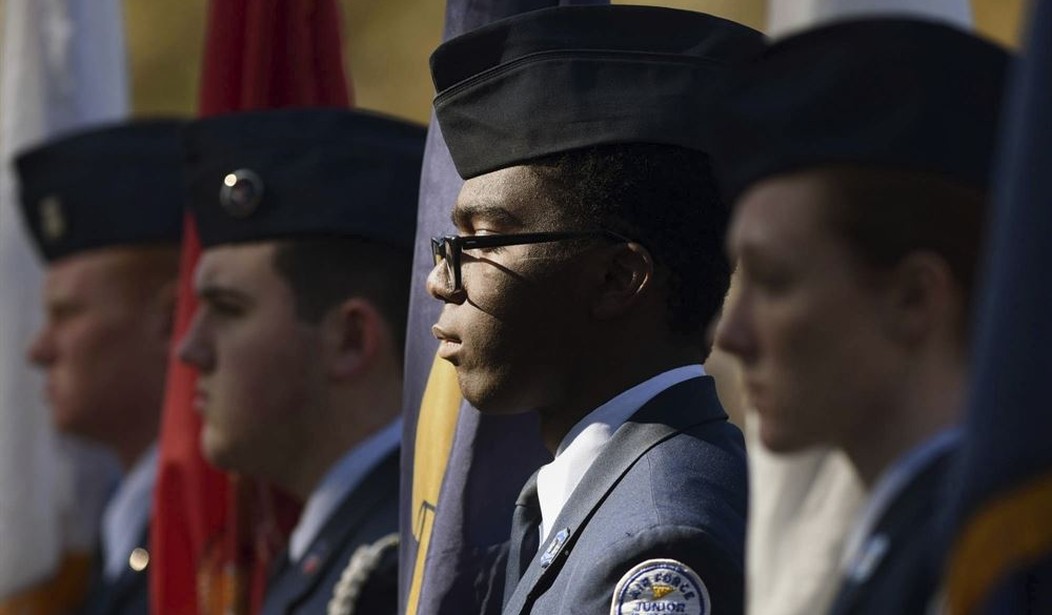With China looming large and overseas conflicts intensifying, the U.S. military is about to get smaller. President Biden will soon sign the annual defense authorization bill which allows the total number of active-duty troops in the armed forces to drop to 1,284,500 in 2024. These numbers reflect a decrease of nearly 64,000 personnel over the last three years, and the smallest total number of troops for America’s military since before the United States entered World War II. The shortfall is primarily due to recruitment woes.
The crisis spans services. Only the Marines and Space Force hit their intake targets. Army, Navy, and Air Force all missed their 2023 recruitment goals by a combined 41,000 personnel.
The bad news comes as reports show service members are turning to TikTok and social media to discourage others from considering military service. In videos that have racked up hundreds of thousands of views, Army soldiers, in uniform, describe the miseries of Army life including low pay, little sleep, and having to meet strict height and weight standards.
Much has been written about why military recruitment became a crisis. Some point to the Biden Administration’s politicization of the services, throwing the military into culture war oddities at the expense of training for real wars. Others point to the shrinking pool of potential recruits, due to rising obesity rates, sinking levels of patriotism, and low civilian unemployment rates, as the key factors in the decline. But regardless of why the crisis came about, perhaps those on the political left and the right can at least find common ground on how to escape it.
This doesn’t require hundreds of millions spent on flashier ads or better branding for military branches. However, the Biden Pentagon made some unusual choices on that front. It does, however, require long-term investment in America’s youth.
Recommended
If the Department of Defense wants to reverse the recruitment crisis, it must begin by engaging young people earlier in their high school journey. Students must hear that the military is a viable career path during their most formative years, long before they’re even eligible to enlist. And programs like the Junior Reserve Officers’ Training Corps (JROTC), a cadet program for high schoolers, are the perfect conduits for such a message. Just consider my own path into the Army.
Even though I signed up for JROTC in high school, I made it clear that I was never going to join the military. In fact, I repeatedly asked my instructors—both retired senior Army leaders—whether there was any type of service obligation or expectation to join the military due to my joining JROTC. I hadn’t come from a military family and I had no idea what military service meant. There was no one in my life who told me engaging war stories, or about how fulfilling it is to serve our nation in uniform. I decided early that the military wasn’t for me.
But by the end of my first year as a cadet, I knew that I wanted to attend the U.S. Military Academy at West Point and serve my country. JROTC had become a major part of my high school experience and taught me the importance of patriotism and military service—without it, I would not have made the decision to serve my country.
Though JROTC is not a formal recruitment tool for the military, research data shows that JROTC has become an indispensable pipeline for recruitment. Studies have found that nearly one-third of high school students with at least some participation in JROTC ultimately enlist in the military after high school. Further, overall enlistment rates of graduating classes with JROTC programs available at their schools are consistently higher than those without. JROTC has also demonstrated stark improvement in class attendance, behavior, grades, and standardized test scores, often amongst poor students in the inner city or rural America. The program helps those who need it most.
It is welcome news, then, that the defense bill awaiting President Biden’s signature authorizes no fewer than 3,400 (and no more than 4,000) JROTC Programs nationwide. Though this is a good start, Congress should seek to expand JROTC programs to more areas around the country and avoid the program’s current over-concentration primarily in the southeast of the United States.
Of course, JROTC is not the only tool to reach young high schoolers. Direct contact with military recruiters on high school campuses can be helpful too. There are also hometown recruiting programs that encourage current service members to return home and recruit in their old high schools.
JROTC offers taxpayers an enticing return on investment. The program is cost-effective and helps ward off the necessity for a military draft with its demonstrated effect on military enlistment rates. The military recruitment crisis will not solve itself overnight. But emphasizing and expanding tools that work, like JROTC, will help ensure the problem is a temporary one.

























Join the conversation as a VIP Member